| DIRECTORY OF NIGHTCLUBS | ||
From the Salsa Museum, we can boast of having a long list of important artists who have supported us since the project started or over the course of all these years. One of them is Roberto Romero Caballero, better known as Tito Allen, who is called ”El Elegante de La Salsa” by his most loyal fans as a result of the book ”Swing Latino” by Angel Mendez.
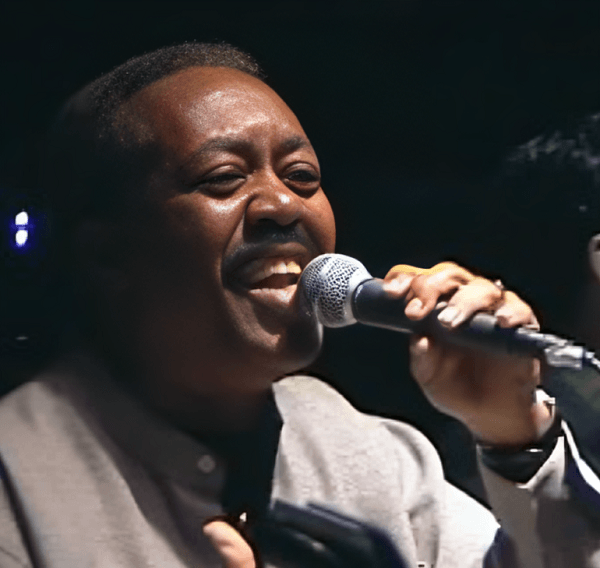
Tito Allen was born in the neighborhood of Santurce, municipality of San Juan, Puerto Rico, in 1946. He began his professional career in music as a 16-year-old teenager, when he was already part of groups in which he played the guitar and even performed on Puerto Rico’s Channel 4.
Although it is true that, initially, he was much more inclined to rock and roll and also used to play the bass, he changed his mind as time went by and decided to become a salsa singer, to the delight of all fans of the genre who gained forever one of their greatest Puerto Rican references. The best thing is that he turned out to have an incredible voice, so it was a very wise decision.
Obviously, Tito had his own inspirations to become what he is. In interviews with Tito, from his point of view, Cheo Feliciano is one of the best salseros of all and he has been listening to him since he was with Joe Cuba Sextet. As for the orchestras, he has also revealed that his favorite is that of Bobby Valentín and the song with which he identifies the most is ”Contento”. Another artist for whom he also expressed his admiration and desire to collaborate is the legendary pianist Eddie Palmieri.
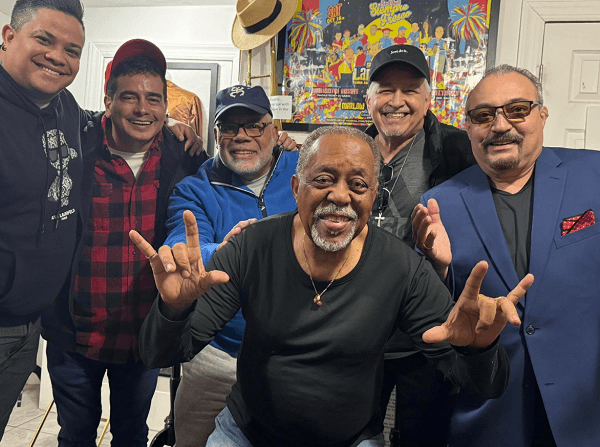
This talented man’s career is so wide that it is impossible to list everything he has done since he started in music, but it is possible to highlight that he has always tried to collaborate with as many groups and artists as possible and the list of recordings he has with other great names proves it. Tito Allen has sung along with Cheo Feliciano, Ray Barreto, La Típica 73, Adalberto Santiago, Papo Lucca, Willie Rosario, Fania All Stars, Pupi Legarreta, among many others.
It should also be noted that the singer traveled to New York in 1972 in order to attend Tito Puente’s shows and try to sing with him, but unfortunately he had no vacancies at that time. In view of this refusal, he decided to meet with pianist Edite Martínez, which resulted in a quintet that used to play in nightclubs.
He went back to Puerto Rico, but traveled again to New York very soon after, since he got a chance to play at ”El Corzo” with Ray Barretto’s orchestra, which was in need of a singer after the departure of Adalberto Santiago. After that, he finally managed to sing with Tito Puente for a few months and then went on to join La Típica 73 and La Puerto Rico All Stars.
All this without counting the large number of productions and recordings in which Tito sang and delivered backing vocals with many other big names in the industry.
Recently, Tito visited us at the Salsa Museum to give us his support and promote the institution as so many of his colleagues have done. In our social networks, you can see two pictures of the artist with our president Johnny Cruz, Viti Ruiz, Jorge Leureyro, Christopher Rey and Ray Sepulveda.
Read also: Puerto Rican singer Max Rosado and what he had achieved in Washington DC
North America / USA / Boston
Turkey is considered one of the countries with the most successful traders in the world and with a big musical influence of the Islamic and Western culture, well, from this country come the wonderful professional salsa dancer Burju Pérez, an entrepreneur who fused the tempo with the comfort and fashion of footwear.

Born in Turkey but arrived from 2 years old to Boston, Massachusetts. From very young, Burju began in the world of rhythmic gymnastics and dance. “My parents say I danced before I walked, or at least I started them both at the same time. I always had a wiggle and a bop”, said Burju for an American media.
Over the years, she learned other rhythms such as: Hip hop, Jazz and classical. Once at the university, she really dabbled in Latin dance, there a dance group was formed and she met her current husband Víctor, whose roots from Puerto Rico and who by that time was already an expert in Salsa dancing.

Once associated both personally and professionally, Burju and Víctor embarked on their way to conquer the most important congresses and festivals in the country as qualified Salsa dancers, starting with the nation’s largest annual convention, LA SALSA FEST, which for that time was only made in two cities of the world: one in San Juan (Puerto Rico – original headquarters) and the other in Los Angeles, (US).
Russia, China, Japan, Turkey, Lithuania, Germany and all Western Europe were also witnesses to the rage of the audience that generated this duo on the dance floor, who stepped on the best stages, generating great respect in the salsa community for being a couple of high competitive range.

Burju during the decade of the 90s began to add her identity to the attire, painting his shoes and creating her own style. By 2003, this regular salsa girl from the stages of Boston and New York had the opportunity to belong to Juan Matos’ Fogarate Dance Project, which was held every weekend in New York. For the same period, Matos came up with another project, this time in Italy and Turkey and for which he had no partner dance so Burju was the ideal candidate to make this tour with him for a month, working full time.

Once in Milan, this choreographer and professional dancer began to create her own project, an idea that would satisfy the needs of the dancers, simply a hybrid between dance and fashion, was the creation of Burju Shoes. In Milan, where I was based for the project, there is this very high fashion and lots of people not wearing dance shoes when they dance.
I was like, “Oh, I’m not trying to be left out.” So when I was social dancing I was rocking these hot fashion shoes I bought there, but every night I was nearly crying because I was in so much pain. That’s when I was like, OH MAN! I want to combine fashion with comfort for dance shoes. She explained in an interview.
Burju Shoes (created in December 2010) are the perfect combination between the avant-garden design, contrast of colors, versatility and comfort, made to highlight the distinctive beauty in each dress and coziness when dancing.
Burju decided to create this company in his home, Boston, a very welcoming place where the scenes and the Latino community has grown exponentially.

When I first started my business, I asked a lot of ladies that were well known (in the dance and salsa world) to help me with a collective push with the brand. These girls not only endorsed it, but became part of the brand and helped with the designs. I even named shoes after them!, said she. I had my own following, but it was so wonderful to have all these girls supporting me and spreading the word.
When I felt weak, I had people to lean on who were not just friends but collaborators in the scene… I’m so grateful for the love and support here. She added. The Burju Shoes business was the change in the footwear industry’s perception for the ladies. The belief for years that the beauty of the shoe was synonymous with pain and tiredness of the feet was in the past.

Burju Shoes offer you elegant shoes that you can use to do your dailies and go to work, they are also perfect for a dinner, cocktail and especially for a night of total fun and a lot of Latin dance.
Burju also cared about brides, and created a wide selection for them for that special day.
Burju thanks to his experience as a professional dancer with 14 years of career, travel and in addition to her creative intuition, she has created great innovative designs in each shoe, which are flexible for the comfort of the user and functional for each occasion.

The construction of each pair of shoes is derived from custom made patterns, high-end manufacturing and high quality materials: satins, leathers, sparkle, faux animal prints and other synthetic or man-made materials.
For the outer soles, the options of suede (more traditional for dance shoes) to the street sole which is great for indoor and outdoor use. I think people appreciate that we put a higher standard on presentation… At the end of the day, selling is not my main mission. But I will educate you and help you find what’s right for you, and help you feel good about yourself. I think this draws people in, said
Even though I don’t dance as much as I used to (since I got pregnant four years ago), and went the fashion and entrepreneur route, I’m still connected to this dance scene through my work and like giving back to the community… I want to show people that arts and business can function together. Burju Perez

Tony Escobar’s uncle (the orchestra’s declamationist) suggested the name because it was an eye-catching and “new” name.
The Zodiac Orchestra was organized with members of a group called Loíza Power directed at that time by Paquito Pérez, who was 14 years old. In addition, it was nurtured with the best musicians of Loíza Sound of Javier Calcaño.

The idea of recruiting these musicians was Paquito’s, since he grew up with José Luis Vizcarrondo and Tony Escobar.
Through Loiceño composers Carlos José Cirino (Tata) and Floren Ayala, the recording was achieved, as they approached Dario Gonzalez of Borinquen Record who contributed to make possible the release of the first 45 and LP. Tata’s “El Adiós” and José Feliciano’s “Las Costumbres” (1971) were part of this musical proposal that was very well received by the public.
After the initial success, many of the musicians dedicated themselves to work and to finish their studies, since they were married and were looking for security and economic stability for their respective families.
The Zodiac had the opportunity to travel to different cities in the United States such as: Boston, Connecticut, Philadelphia, New York, among others. They also traveled to other countries such as Colombia and others.
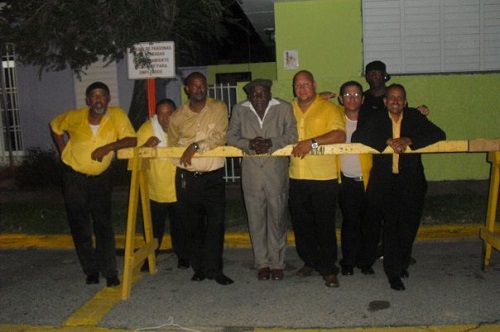
During these years, several orchestras were at their peak, such as: La Fania, La Selecta, Lebron Brother, La Corporación Latina, El Gran Combo, La Lupe, Chivirico Davila, Bobby Valentín, Tomy Olivencia, Ismael Miranda, Ricardo Rey, Roberto Rohena, Roberto Anglero, Justo Betancourt, among others.
In 1997 Paquito decided to retake and regroup the orchestra, and for some years he dedicated himself to reunite with the musicians and organize them again.
These two presentations were made at the invitation of Pedro Arroyo (director of Z-93) to Paquito, and were a great success. El Gran Combo, Rubén Blades, Jimmy Zabater, La Solución, among others, also played in the tribute to Cheo.
The members of the current orchestra are young, and most of them were music students of Paquito Pérez, who worked as a music teacher for 30 years in the town of Loíza (before retiring).

In 2010 the orchestra played in the National Salsa Day and in 2012 the orchestra played again in the same activity, but this time the activity was dedicated to La Orquesta Zodiac and La Corporación Latina. In which Z-93 gave them a well-deserved recognition and Paquito, José L, Tony, Tata, Laureano, and the rest of the new members of the orchestra were present.
Currently the orchestra meets periodically to practice, and are available for all kinds of activities.
Did you know that…! In June 1971 what we know today as the “Zodiac Orchestra” was organized in the town of Loíza in Puerto Rico. Its name came about due to the fact that in the early 70’s the program “Walter Mercado” and the Zodiacal Signs, which was broadcasted on channel 2 in Puerto Rico, was in fashion. Tony Escobar’s uncle (declamationist of the orchestra) suggested the name because it was a striking and “new” name …Referring to the image of the post belongs to the second production of this Puerto Rican group entitled “Spiritual Beauty Vol. II” published in 1973 under the label “Horóscopo Récord” and directed by the founder, arranger, pianist and saxophonist Mr. José Luis Vizcarrondo. It is worth mentioning that this production includes the classics: Montuno de Oriente, Vicio de Amor and Belleza Espiritual”. Another important fact about the group is that it is still in force with musicians of the new generation, but with the same Swing and musical concept.
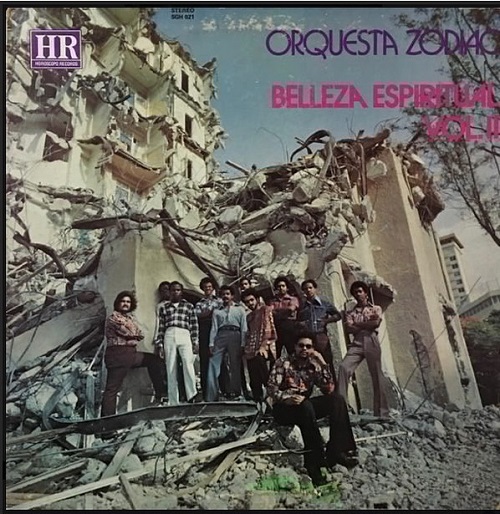
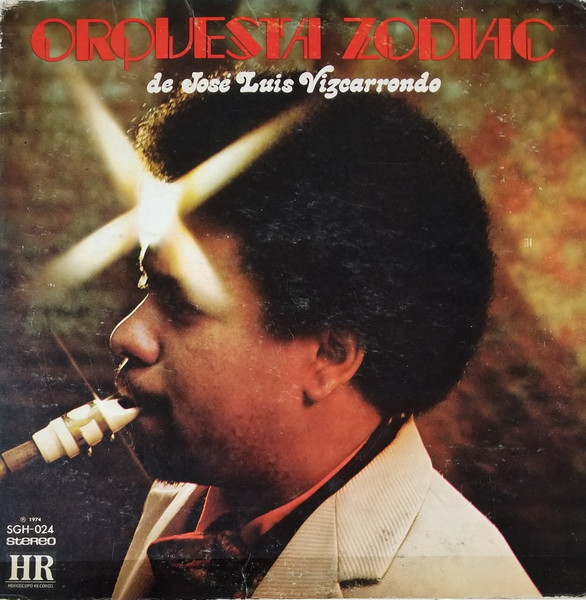

Also Read: Sessions from La Loma brings together salsa fans from all over the world in Puerto Rico
National Culture Award 2023-24 and the Artistic Glories of Venezuela Award.
Cheo Linares born in the city of Caracas-Venezuela, he has been part of groups such as La Salsa Mayor, Salsa Mágica, el Trabuco Venezolano and Saxomanía.
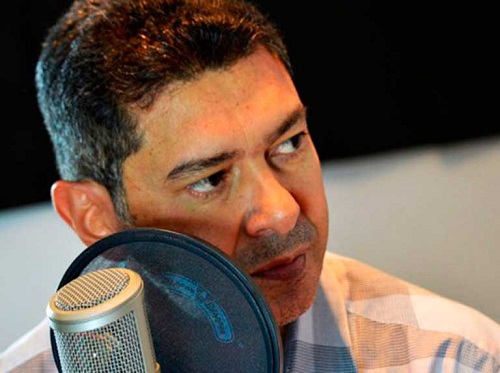
He is one of the most important composers of Venezuela.Linares has just been distinguished with the National Culture Award 2023-24 in the music category, so it is his first musical release since this important recognition, which surely is an encouragement to continue his work.
Last Saturday, January 11, 2024, Venezuela’s Minister of Culture, Ernesto Villegas, announced the winners of the National Culture Award 2023-24 and the Artistic Glories of Venezuela Award 2024.
The names of the artists, teachers and researchers favored by the jury as winners of the 2023-24 National Culture Award were announced by Venezuelan Minister of Culture Ernesto Villegas.
In the Music Mention, the flute master Antonio Toñito Naranjo stood out “for his career as a performer and trainer of generations of Venezuelan flutists and for his contribution to Venezuelan culture”, according to Villegas.
It is worth mentioning that Rafael Salazar has been one of the most outstanding researchers, compilers and disseminators of Venezuelan popular culture, in addition to being the author of books dedicated to folklore.

Several extraordinary musicians received honorary mentions in the National Culture Award, such as cuatrista Daniel Enrique Gil Rosado, llanero singer Cristóbal Jiménez, master composer Henry Martínez, oriental singer Hernán Marín, and members of Los Guaraguao, Eduardo Martínez, José Gerardo Cordero and José Manuel Chachata Guerra.
Artistic Glories of Venezuela
The Artistic Glories of Venezuela award deserved a special mention, which was given to great singers such as Cecilia Todd, Lilia Vera and Biella da Costa. The first two are part of the living history of Venezuelan folklore and their voices are part of the national heritage. Biella da Costa is one of the leading figures of jazz in Venezuela.
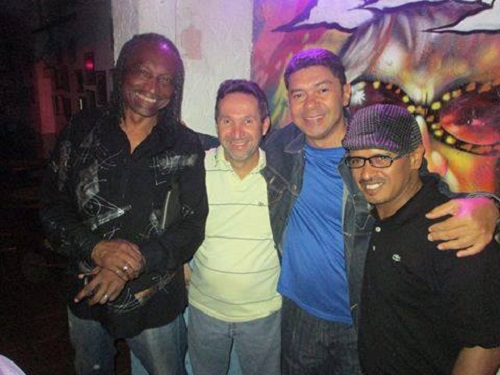
Mario Díaz, an enormous exponent of the central joropo, was also recognized as an Artistic Glory of Venezuela, as was the great composer and oriental singer Perucho Aguirre.
The same award went to the Simón Bolívar System of Children’s and Youth Choirs and Orchestras, and groups such as the parranda La Flor de Cojedes, the Teatro Negro de Barlovento or Los Cañoneros, excellent representatives of merengue rucaneao, were not left behind.
In the world of rock ‘n’ roll, the group Los Tres Tristes Tigres, the mythical Ivo, and more recently, the singer Colina, famous for his pop hits in the 80’s, shone.
Tags: Antonio Toñito Naranjo, Biella da Costa, Cecilia Todd, Chachata cultura, Eduardo Martínez, Ernesto Villegas, Glorias Artísticas de Venezuela Hernán Marín Jesús Sevillano, José Gerardo Cordero, José Montecano, lilia Vera, Los Guaraguao, Mario Díaz, Perucho Aguirre. National Culture Award and Rafael Salazar.
Cheo says that his aunt was the one who opened the door and then told him: “Hey, Cheo, they are looking for you. They are asking if you want to sing in La Salsa Mayor…”. Cheo, shirtless, came out. He couldn’t believe it.

“Venezoa is a term I created to name the Venezuelan salsa music lover, to whom I dedicate this production, which in turn I extend to the salsa brothers of the planet, this CD was made with all the love, mysticism and professionalism of the musicians, technicians and designers who participated in it, to them I present my most sincere and expressive thanks for the support provided. Grateful to all the people who have supported my career, especially journalists, announcers, DJs, collectors and promoters, for all, blessings, love and light …”.
Cheo Linares.
Source: Radio Café Atlántico